Your Expert Guide to Low Voltage Switchgear Maintenance in the UAE
In the UAE and across the GCC, where operational climates are uniquely harsh, proactive low voltage switchgear maintenance isn’t just a good practice—it's essential for ensuring operational continuity and asset longevity. This isn't about ticking boxes on a checklist. It's about a strategic, planned approach that directly addresses the regional challenges of heat, humidity, and dust, which accelerate equipment degradation.
Why a Localized Maintenance Strategy is Non-Negotiable for UAE & GCC
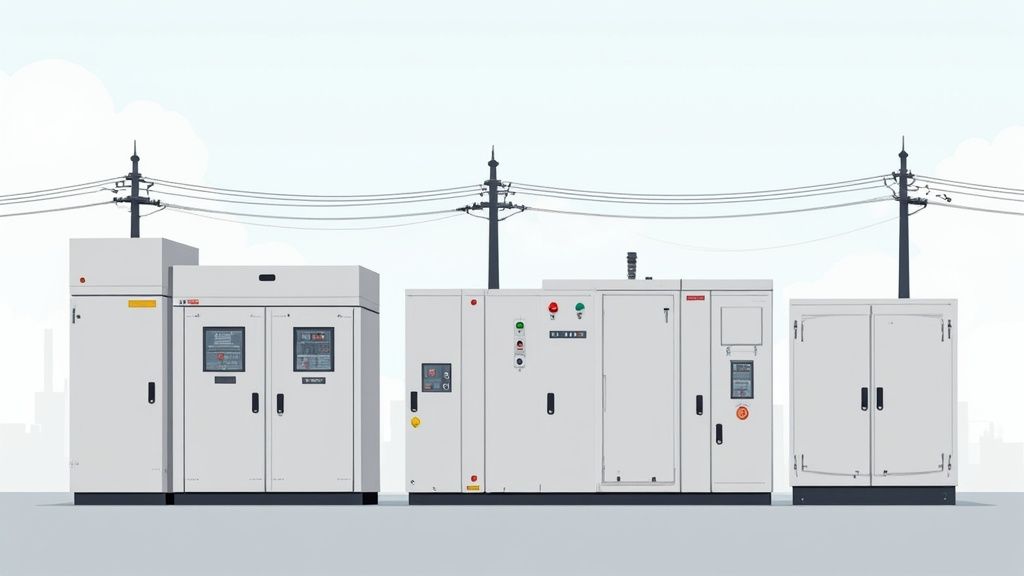
Think of your low voltage (LV) switchgear as the central nervous system of your power distribution, whether in a sprawling industrial plant in Jebel Ali or a commercial tower in Riyadh. The environmental realities here—intense ambient heat, relentless humidity, and fine, pervasive dust—are constantly working against your equipment's reliability.
These aren't minor annoyances; they are active threats to your entire electrical infrastructure.
The GCC's Environmental Gauntlet
Consistently high temperatures mean your switchgear components, like circuit breakers Dubai and power supplies, often operate near their thermal limits. Heat is the primary enemy of insulation and sensitive electronics. A well-known rule of thumb states that for every 10°C increase in operating temperature, the lifespan of an electronic component can be cut in half.
Add high humidity, and you get condensation inside enclosures—a fast track to corrosion, electrical tracking, and potential flashovers. Combine this moisture with airborne dust, and a conductive sludge forms on insulators and busbars. This contamination degrades dielectric strength and traps heat, creating a vicious cycle of failure.
A well-structured low voltage switchgear maintenance plan is your best defense against these aggressive environmental attacks. It transforms maintenance from an operating cost into a strategic investment in reliability and safety, crucial for procurement teams and facility managers alike.
At GoSwitchgear, we supply a complete range of low voltage components designed for these conditions, including:
- Circuit Breakers & Protection: MCCBs, MCBs, RCDs, and relays.
- Power Management: Energy meters, power supplies (SMPS), and transformers.
- Control & Automation: Contactors, relays, and pilot devices.
- Enclosures & Wiring: DIN rail isolators, terminal blocks, and IP-rated enclosures.
Key Elements of a Robust LV Switchgear Maintenance Plan
| Maintenance Pillar | Core Objective | Essential Activities for UAE/GCC |
|---|---|---|
| Safety & Compliance | Ensure personnel safety and meet local regulatory standards (DEWA, ADDC). | Lockout/Tagout (LOTO), arc flash hazard analysis, verifying IEC and GCC certifications. |
| Visual & Mechanical Inspection | Identify physical signs of wear, damage, or contamination. | Checking for corrosion on enclosures, dust buildup on components, loose connections, and signs of overheating. |
| Electrical Testing | Verify the integrity and performance of insulating materials and conductors. | Insulation resistance testing (Megger), contact resistance measurement, thermal imaging. |
| Functional Testing | Confirm that protective devices and mechanisms operate as designed. | Circuit breaker trip tests, protection relay verification, interlock checks. |
| Environmental Control | Mitigate the impact of heat, humidity, and dust inside the switchgear. | Cleaning, ventilation checks, verifying IP ratings are intact, ensuring heater and thermostat function. |
| Documentation & Scheduling | Maintain detailed records and plan future maintenance effectively. | Logging all findings, test results, and repairs; scheduling based on condition and criticality. |
This table provides a high-level roadmap. Each pillar is critical for a program that prevents failures and extends asset life.
The Business Case for Proactive Maintenance
Viewing maintenance as a mere expense is short-sighted. The true cost lies in unplanned downtime. A single switchgear failure can halt an entire facility, leading to staggering financial losses and production chaos. Our guide on preventing common switchgear failures details what can go wrong.
A proactive maintenance program delivers measurable returns:
- Enhanced Safety: Significantly lowers the risk of arc flash incidents, keeping your team safe.
- Improved Reliability: Catches potential faults before they become failures, avoiding costly outages.
- Regulatory Compliance: Ensures systems comply with standards from local authorities like DEWA, SEWA, and ADDC.
- Longer Asset Life: Proper care of your electrical components UAE maximizes their operational lifespan and ROI.
Mastering Safety and LOTO Procedures
Working with low voltage switchgear is a high-stakes environment where a single mistake can be catastrophic. Before any work begins, establishing a secure work environment through Lockout-Tagout (LOTO) is the absolute priority. This isn't just paperwork; it’s a physical process for isolating energy sources to prevent accidental re-energization.
In the fast-paced industrial landscape of the GCC, cutting corners on safety is a gamble you cannot afford. A classic mistake is forgetting potential back-feed from secondary sources like UPS systems or generators. A thorough LOTO plan must account for every possible energy source.
Verifying a Zero-Energy State
The most critical step after isolating a circuit is verification. Never assume a circuit is dead.
- Use the Right Tool: Use a multimeter rated for the appropriate voltage.
- Live-Dead-Live Principle: This is non-negotiable. 1) Test your meter on a known live source. 2) Test all phases of the isolated equipment. 3) Test the meter on the live source again to ensure it didn't fail.
- Check Everything: Verify zero voltage on all phase conductors and between each phase and ground.
A common oversight is failing to account for stored energy in capacitors, often found in a SMPS power supply. A comprehensive LOTO plan addresses all energy sources, not just the main breaker.
Essential Personal Protective Equipment (PPE)
Your PPE is your last line of defense. For LV switchgear maintenance, you need gear designed to protect you from an arc flash. Your essential kit should include:
- Arc-Rated Clothing: Flame-resistant material with a specific calorie rating (cal/cm²).
- Insulated Gloves with Leather Protectors: Inspect for any pinholes or damage before every use.
- Arc-Rated Face Shield/Hood: Protects against the intense heat and blast of an arc flash.
Building a safety culture requires documented, repeatable processes. For more on formalizing these steps, see these Standard Operating Procedures for Electrical Maintenance Departments.
Your Comprehensive Inspection Checklist
A solid low voltage switchgear maintenance program is built on thorough visual and mechanical inspections. This is a systematic hunt for early warning signs of trouble—critical in the demanding environments of the UAE and KSA.
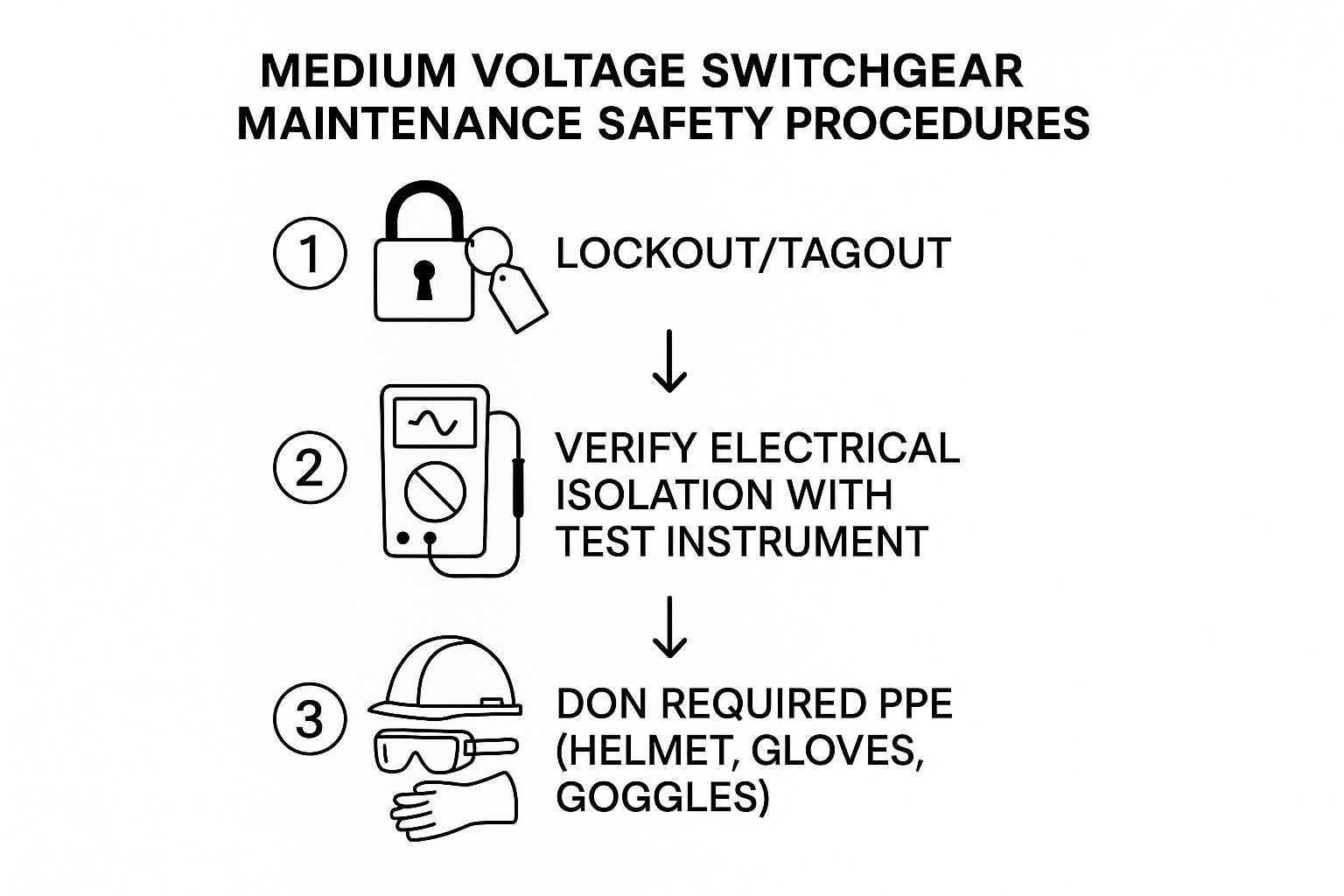
The three-step flow—Lockout/Tagout, verify isolation, and wear correct PPE—is non-negotiable.
Enclosure and Structural Integrity
The enclosure is your first line of defense against the harsh GCC climate. Its integrity is paramount.
Start by checking for physical damage like dents or warping. Inspect seals and gaskets on every door; a brittle seal in our humid climate is an open invitation for moisture and corrosive air. Check for rust, paying close attention to the base and around ventilation louvers. A high IP rating is useless if the enclosure is compromised.
Busbars, Connections and Insulators
Inside, the busbar system is the heart of the operation. Visually inspect every busbar and bolted connection for signs of overheating, such as discolored or melted insulation. A rainbow-like sheen on copper is a dead giveaway of a loose, heat-generating connection.
Next, focus on the insulators and components like DIN rail isolators.
- Cracks or Chips: Even a tiny crack can compromise an insulator's dielectric strength.
- Dust and Grime: In Dubai, a buildup of conductive dust is a common enemy, creating tracking paths for electricity.
- Signs of Corona Discharge: A fine white powder on surfaces indicates corona discharge, where air around a conductor ionizes.
A slightly discolored busbar or dusty insulator may seem minor, but these are the early warnings that snowball into major failures and expensive outages.
Using a detailed electrical inspection checklist ensures consistency. Remember that transient overvoltages also stress equipment; learn more by reading our guide on understanding surge protection devices.
Circuit Breaker Mechanisms
Finally, inspect the circuit breakers—the active workhorses of system safety. Verify that mechanical indicators (open/closed, spring charge) are functioning and show the correct state.
Check moving parts for proper lubrication, but don't over-lubricate, as excess grease attracts dust. With the gear de-energized, manually operate the breaker to feel for smooth, clean movement without binding.
Getting Serious with Advanced Electrical Testing
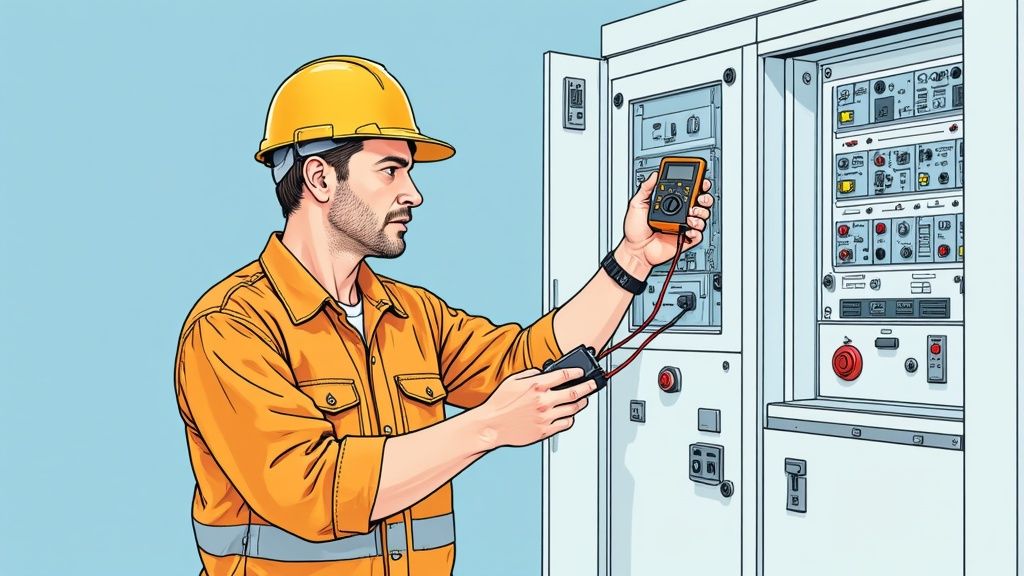
Visual inspections catch the obvious, but the true health of your switchgear lies hidden within its components. Advanced electrical testing provides a data-driven picture of the equipment's internal condition, allowing you to predict failures before they happen. For anyone managing critical power systems in Dubai, this is the cornerstone of any serious low voltage switchgear maintenance strategy.
Insulation Resistance (Megger) Testing
Insulation keeps electricity where it belongs. Over time, heat, humidity, and contamination—facts of life in the UAE—cause it to degrade. Insulation Resistance (IR) or Megger testing is designed to find these weaknesses. By applying a DC voltage and measuring resistance in megaohms (MΩ), we can identify compromised insulation. A low reading is a major red flag indicating a risk of short circuits or arc flash events.
Contact Resistance Testing
Every connection point, from busbar joints to circuit breaker contacts, is a potential failure point. A loose or corroded connection creates resistance and heat, a leading cause of switchgear failures. We use a Digital Low Resistance Ohmmeter (DLRO) for Contact Resistance testing. By passing a current through a connection and measuring the voltage drop, we calculate resistance down to the micro-ohm (µΩ) level.
Tracking contact resistance values over time is a powerful predictive tool. A steadily rising resistance is a clear warning that a connection is deteriorating, signaling the need for immediate corrective action before it leads to thermal runaway.
Making Sense of the Data
Running tests is just the first step; interpreting the results is the real skill. You must compare readings against established benchmarks from IEC standards or OEM datasheets.
- Set Your Baseline: The initial test results from new equipment are your "as-new" benchmark.
- Look for Trends: A slow, steady decline in insulation resistance or a gradual increase in contact resistance over time indicates degradation.
- Investigate Spikes: Any major deviation from your baseline demands immediate investigation.
This data-driven approach shifts you from a reactive "fix-it-when-it-breaks" mentality to a proactive, predictive strategy essential in the UAE's demanding operational climate.
Integrating Smart Maintenance Technologies
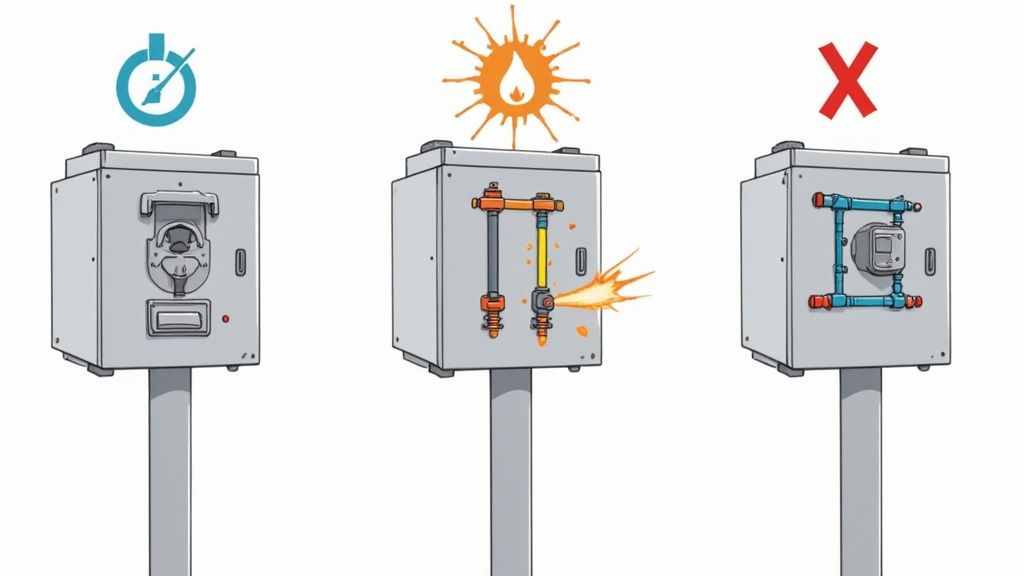
The future of low voltage switchgear maintenance is driven by live data, not just the calendar. This shift to a condition-based model is crucial for facilities in the UAE and GCC to get ahead of problems and align with the region’s grid modernization goals. Regional spending on smart grid technology hit USD 8.7 billion in 2023, underscoring this trend.
Real-Time Asset Health Monitoring
Smart sensors and IoT devices provide a constant stream of data on critical parameters like temperature and humidity inside an enclosure, vital in the Gulf climate. This technology, especially for an energy meter GCC, offers a warning long before a traditional inspection could.
- Thermal Imaging: Non-invasive thermal cameras are a game-changer for spotting hotspots in real time, identifying loose connections or overloaded components from a safe distance.
- Partial Discharge (PD) Sensors: Continuous PD monitoring with ultrasonic or radio frequency sensors can detect the faint electrical discharges that signal deteriorating insulation, providing a critical early warning to prevent a flashover.
By analyzing this constant flow of data, your maintenance becomes a proactive strategy where every decision is backed by solid evidence.
From Data to Decisions
Feeding this data into a centralized system allows maintenance teams to see the big picture. This is key to intelligent asset management. For a detailed look at these systems, explore our guide on IoT cloud solutions for energy management in the UAE.
This integrated strategy prevents the massive costs of unplanned downtime. Adopting advanced predictive maintenance strategies can also drastically cut long-term operational costs and extend the life of your critical LV assets.
Common Questions on LV Switchgear Maintenance
Practical questions often arise when dealing with the specifics of low voltage switchgear maintenance, especially in the UAE and GCC. Let's address some common queries.
How Often Should We Maintain LV Switchgear in the UAE's Climate?
Manufacturer guidelines often suggest an annual cycle, but this is insufficient for UAE conditions. The combination of heat, humidity, and dust puts accelerated stress on all electrical components UAE. We strongly recommend biannual (every six months) visual and thermal imaging inspections. A full mechanical and electrical service, including comprehensive testing, should be performed at least annually. For critical sites like data centers or industrial plants, continuous monitoring with smart sensors is the gold standard.
What Are the Biggest Maintenance Mistakes to Avoid?
Overlooking simple tasks causes the biggest problems.
- Neglecting Cleaning: Allowing dust and grime to build up on insulators and busbars compromises insulation and invites overheating.
- Using Incorrect Lubricants: An incompatible grease on circuit breaker mechanisms can cause sluggish operation or failure during a fault.
- Improper Torquing: Failing to properly torque busbar connections is a leading cause of dangerous hotspots.
- Calendar-Based Maintenance: Blindly following a schedule instead of using data from electrical testing and thermal scans is a major oversight.
In-House Team or Specialist Contractor?
This decision depends on task complexity and required expertise.
- In-House Capabilities: A well-trained in-house team can handle routine tasks like visual inspections, cleaning, basic lubrication, and checking enclosure heaters.
- Specialist Expertise: Advanced diagnostics like contact resistance measurement, IR testing, and protective relay testing require specialized, calibrated equipment and certified technicians who can accurately interpret the results.
For comprehensive maintenance that guarantees compliance with local utility standards (like DEWA) and ensures the highest level of safety, partnering with a specialist firm is the most effective approach.
At GoSwitchgear, we don't just supply components; we provide the expertise to ensure your electrical systems run safely and reliably. For expert support and to access premium low voltage electrical components UAE for your projects in Dubai, Abu Dhabi, or anywhere in the GCC, our team is ready to assist.
Reach our Dubai team for a quote or project support. Explore our comprehensive catalogue at GoSwitchgear.
Article created using Outrank



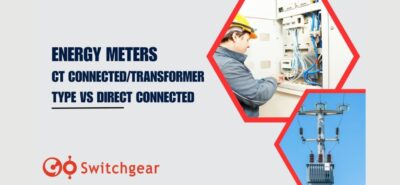

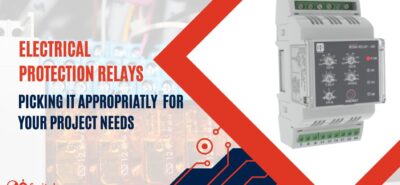
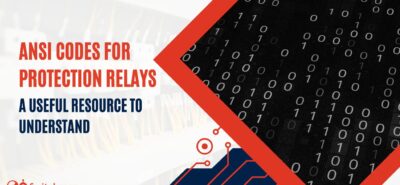
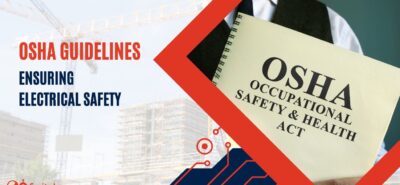
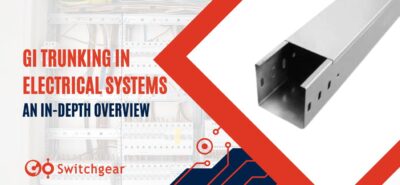

Leave a Reply